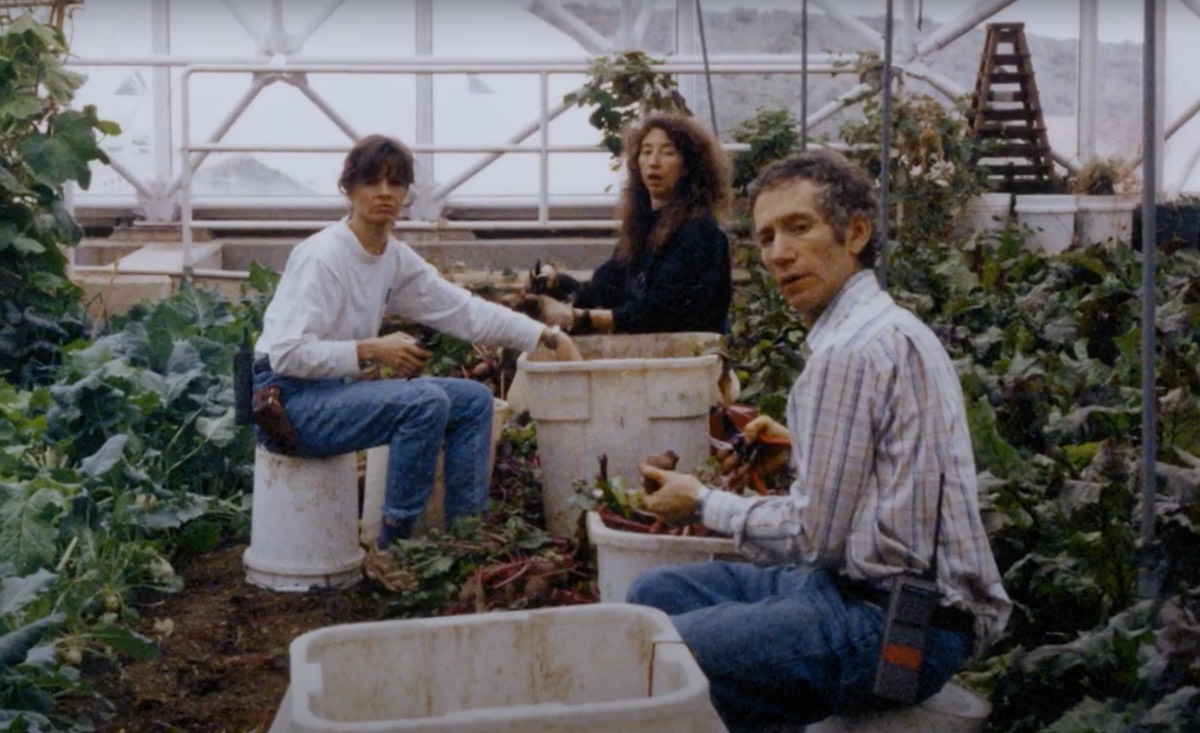Biosphere 02
![]()
Oracle, Arizona, USA
Eco / Experimental
1987 - Present

Oracle, Arizona, USA
Eco / Experimental
1987 - Present
1 Lung 2 Desert Biome 3 Marsh Biome 4 Savanna Biome 5 Ocean Biome 6 Rainforest Biome 7 Human living spaces 8 Laboratories 9 workshops 10 Viewing platforms
![1988 Schematic B2 Plan Plan: Drawn from Schematic B2 Plan. University of Arizona Biosphere 2 Archive]()
Biosphere 2 was, and is, an ambitious utopian vision of how humans should live on Earth - Biosphere 1. Begun in 1984, the goal of the world’s largest vivarium was to study the interaction of earth’s biomes and, long-term, to create a self-sufficient, closed-system environment that could be deployed on mars or on earth in case of ecological disaster or nuclear war. Located in the extreme climate of the Sonoran desert, The Biosphere 2 contained seven biome areas: an ocean (5), mangrove wetlands (3), Tropical rainforest (6), Savanna grassland (4), human living spaces (7) with laboratories (8) and workshops (9). The Biosphere 2 was intended as a demonstration project; the architecture is both transparent and wrapped in viewing platforms (10). Two missions, in 1991 and 1994, sealed eight researchers inside the Biosphere to test the system’s viability and conduct experiments.
The researchers, called Biospherians–or in T.C. Boyle’s fictionalized version, Terranauts–lived and worked together for a period two years. The combination of community and scientific inquiry can be traced back to Synergia Ranch, which was founded with the explicit goal of doing ecological experiments at a grand scale. The work and research still happening at Biosphere 2 is critically important to the problems we face today.

Biosphere 2 was, and is, an ambitious utopian vision of how humans should live on Earth - Biosphere 1. Begun in 1984, the goal of the world’s largest vivarium was to study the interaction of earth’s biomes and, long-term, to create a self-sufficient, closed-system environment that could be deployed on mars or on earth in case of ecological disaster or nuclear war. Located in the extreme climate of the Sonoran desert, The Biosphere 2 contained seven biome areas: an ocean (5), mangrove wetlands (3), Tropical rainforest (6), Savanna grassland (4), human living spaces (7) with laboratories (8) and workshops (9). The Biosphere 2 was intended as a demonstration project; the architecture is both transparent and wrapped in viewing platforms (10). Two missions, in 1991 and 1994, sealed eight researchers inside the Biosphere to test the system’s viability and conduct experiments.
The researchers, called Biospherians–or in T.C. Boyle’s fictionalized version, Terranauts–lived and worked together for a period two years. The combination of community and scientific inquiry can be traced back to Synergia Ranch, which was founded with the explicit goal of doing ecological experiments at a grand scale. The work and research still happening at Biosphere 2 is critically important to the problems we face today.


Nam semper semper ex
In porttitor pellentesque sapien